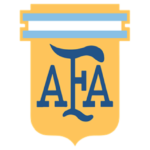


When traveling to different Spanish speaking countries you can expect to find that each region has their own twist on the language, their own specific dialect. You should also expect to stumble a little at first trying to get your footing in each new style. But I have to say, I’ve been in Buenos Aires for a little over a month now, and these linguistically perplexing Porteños* keep throwing me curveballs.
The newest curveball to trip me up is known to the locals as “verse” or “al reves”. “Al reves” is a lunfardo* mutation where you take a two-syllable word and flip the syllables. For example, café becomes feca, and tango becomes gotán. On occasion, flipping the syllables of a word changes the meaning. For example, a galan. A galan is a man who is popular with the ladies, whereas a langa is a man that thinks he’s good with women, when really everyone thinks he’s kind of a joke.
So far langa is the only al reves word that I’ve found that has an alternate meaning (though I’m eagerly hunting for more). For the most part, al reves is used with everyday words like the words for street or glass.
A Porteña friend of mine taught me a trick for detecting al reves words. The trick is to repeat the al reves word over and over, and when you repeat it you should be able to hear the original word in between. I’ll try to illustrate:
For example, mina- the Lunfardo word for a beautiful woman. When turned al reves mina becomes nami. Now repeat out-loud and pay attention to the boldfaced letters.
nami nami nami nami nami nami
You should’ve been able to hear mina between every nami. And if you couldn’t, well I outlined them in boldfaced letters- Now get your head in the game.
Maybe you’ve noticed that there is a chain of pizza restaurants in Buenos Aires called Zapi. If you ignore the absence of a second ‘p’ you get:
zapi zapi zapi zapi zapi zapi
Try reversing calle the word for “street”. Calle becomes lleca:
lleca lleca lleca lleca lleca lleca
Or maybe the word for glass, vaso:
sova sova sova sova sova sova
One more just to drive it home- bathroom, baño:
ñoba ñoba ñoba ñoba ñoba ñoba
To try and figure out a couple on your own try the more commonly used:
*Garpa
*Garca
Right about now you might be banging your head against your desk and asking yourself, “Why? Why must they confuse me so? I thought I was getting the hang of it all, and now they’re reversing words…” To be honest, I don’t know what to tell you. I’ve heard a few theories tossed around by some of the locals I interviewed but I’m still on the lookout for a solid answer.
What I do know is Castellano (pronounced “Ca-ste-sha-no”) is, by no means, an easy dialect of Spanish to master. However, with its influences from languages all the over the world, it is extremely interesting. A little frustrating at times, Castellano is a beautiful and alive dialect of Spanish that will certainly keep you on your toes.
Footnotes:
(1) Porteño- refers to a person who is from or lives in the port city of Buenos Aires
(2) Lunfardo- form of slang used in Buenos Aires. An extensive language all on it’s own, Lunfardo is known for its use of word-play as a means of masking more “colorful” language. Originally made popular by Tango music, Lunfardo was born in La Boca, where immigrants (the majority from Italy and Spain) moved at the end of the 19th century and brought their native language with them. A mix of many world languages, Lunfardo is still used heavily in Buenos Aires.
(3) Garpa = Pagar, Garca = cagar
(US) 910 795 2992
(AR) +54 9 11 —- —-
©Copyright 2025 Landingpadba, LLC